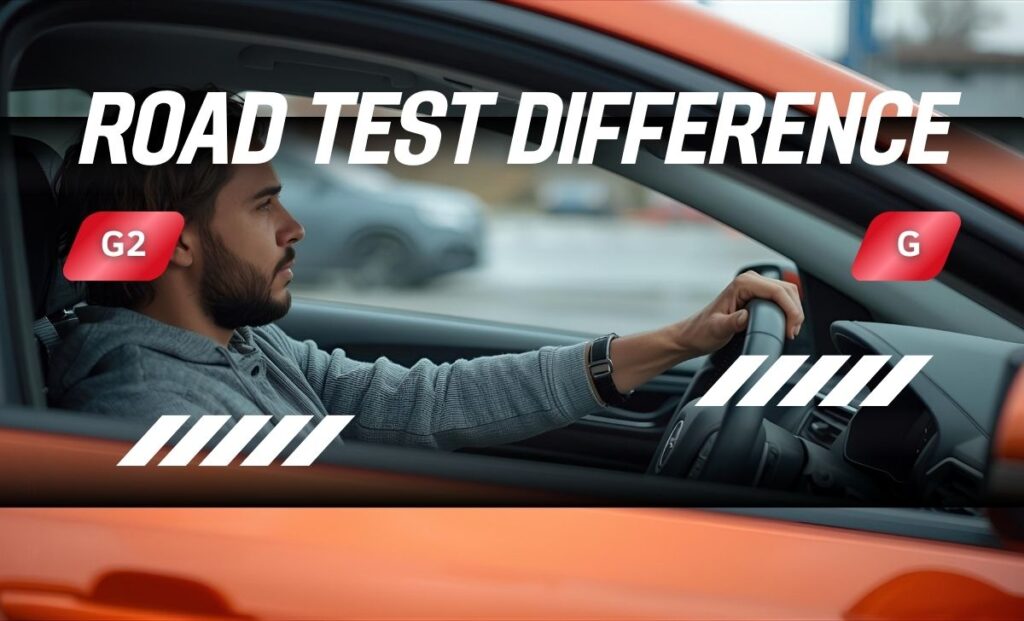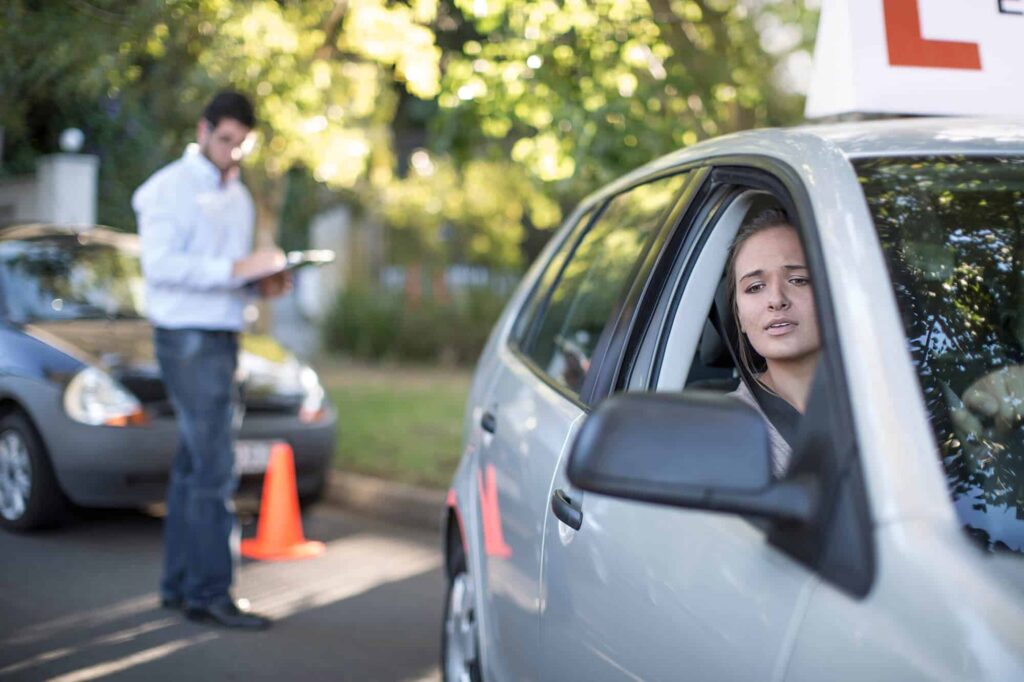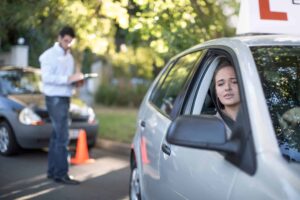You’re staring at the MTO website, thinking: “G2 or G, which one is the real deal?” I feel you. Ontario driving is a jungle. There’s traffic, highways, multi-lane chaos, pedestrians, cyclists, and yes, examiners who seem to have a sixth sense for mistakes.
But here’s the truth. Understanding the G2 vs G road test differences isn’t just about passing a test. These exams are checkpoints in your journey from nervous beginner to confident, fully licensed driver. Knowing the differences, and more importantly how to prepare, can save you hours of stress, dozens of practice sessions, and maybe even a few tears.
This guide is packed with details, real-life examples, personal stories, and insider tips from instructors. By the time you finish, you’ll know exactly what to expect, how to practice, and how to drive with confidence in Ontario.
Ontario’s Graduated Licensing System: Why It Exists
Ontario doesn’t throw beginners onto highways and hope for the best. The graduated licensing system (G1 → G2 → G) builds skills step by step.
G1 License
Your first step. Must be 16. Drive only with a licensed driver in the passenger seat. No highways alone. No alcohol. Limited night driving. Think of it as your apprenticeship.
G2 License
Your first taste of independence. You can drive alone, though passenger and nighttime restrictions apply if you are under 19. City streets, residential areas, parking, and local highways are all part of your learning. You’re still learning, but now you’re on your own.
G License
Full, unrestricted license. Highways, night driving, city chaos, and long-distance trips. Freedom to go anywhere.
Typical Timeline
| License | Minimum Holding Period | Notes |
| G1 | N/A | Must be at least 16 |
| G2 | 8-12 months | 8 months if driver education completed |
| G | 12 months | Must hold G2 for at least 12 months |
Pro Tip: Patience is key here. Every month spent practicing builds skills that save lives and insurance headaches later.
G2 vs G Road Test Differences
Confused about Ontario’s G2 and G tests? You’re not alone. Understanding the G2 vs G road test differences can help you pass on your first try and drive confidently in the city and on highways
Eligibility: Who Can Take Which Test
Wondering if you’re ready for your driving test? Find out who can take which test and what you need to qualify.
G2 Road Test
- Must be at least 16.
- Hold a G1 for 8 months (driver education) or 12 months (no courses).
- Recommended 20+ hours of practice, covering city streets, residential roads, and parking.
- Must meet basic health and vision standards.
G Road Test
- Must be at least 17.
- Hold a G2 for 12 months.
- Recommended 50+ hours of practice, including highways, multi-lane roads, and complex intersections.
- Vision and medical checks may be required.
| Requirement | G2 | G |
| Age | 16+ | 17+ |
| Prior License | G1 | G2 |
| Practice Hours | 20+ | 50+ |
| Medical Check | Basic | Vision/medical may be needed |
Pro Tip: Notice that jump from city streets to highways? That’s why most learners underestimate the G test.
Test Formats: What Happens in Real Life
Wondering what your driving test is really like? Here’s a peek at the steps and challenges you’ll face on the road.”
G2 Test
Duration: 20-30 minutes. The examiner watches how you handle basic driving maneuvers. You’ll face:
- Parallel parking between two cars or markers.
- Three-point turns on narrow streets.
- Roadside stops and proper re-entry into traffic.
- Left and right turns at intersections.
- Lane changes, signal use, and observation skills.
Route: Mostly residential and city streets. The goal is safe and controlled driving.
G Test
Duration: 30-45 minutes. Focus shifts to advanced driving. You’ll navigate:
- Highway merges and lane changes at speed.
- Multi-lane intersections, roundabouts, and busy streets.
- Exiting highways safely and smoothly.
- Defensive driving skills and hazard perception.
Route: City streets plus highways. This is where nerves spike, especially for first-timers on the 400-series.
| Feature | G2 | G |
| Duration | 20-30 mins | 30-45 mins |
| Environment | Residential, city | Residential, city, highway |
| Maneuvers | Parallel parking, three-point turn | Highway merging, lane changes, exits |
| Focus | Vehicle control, observation | Defensive driving, high-speed skills |
| License Awarded | G2 | G |
Skills Assessed: What You Actually Need
Not sure what skills your driving test really checks? Here’s what you need to know to pass with confidence.
G2 Skills
- Vehicle control: smooth acceleration, braking, steering.
- Observation: mirrors, blind spots, intersections.
- Lane discipline: proper positioning and turning.
- Parking: parallel and three-point turns.
- City awareness: pedestrians, cyclists, stop signs.
G Skills
- Highway driving: merging, lane changes, maintaining speed.
- Defensive driving: anticipating hazards, reacting safely.
- Advanced city driving: multi-lane roads, roundabouts, heavy traffic.
- Night and poor weather driving.
| Skill | G2 | G |
| Vehicle Control | Basic | Advanced |
| Highway Driving | No | Yes |
| Parking | Parallel & 3-point | Rarely tested |
| Defensive Driving | Observation | Full defensive skills |
Personal Story: One student nailed parallel parking but froze merging onto the 401. He laughed afterward and said, “Parking was easy, but merging? Nightmare.” Exactly why practicing highways is critical.
Common Mistakes and How to Avoid Them
Nervous for your G2 or G test? Knowing the common mistakes and how to avoid them can save you time, stress, and extra lessons.
G2 Mistakes
- Rolling stops.
- Forgetting signals or mirrors.
- Incorrect lane usage during turns.
G Mistakes
- Hesitation on highway merges.
- Tailgating or following too close.
- Panicking at roundabouts or multi-lane intersections.
Tips
- Repeat maneuvers until they’re muscle memory.
- Always MSB: Mirror, Signal, Blind spot.
- Simulate real-life conditions: rush hour, night, rain.
- Observe other drivers: pick up habits that work.
Scenario Example: I had a student who failed G2 by parking crookedly. Not dangerous. Just sloppy. We practiced 15 minutes daily, and the retest was a breeze. Small details matter.
Step-By-Step Maneuvers
Feeling unsure behind the wheel? Our step-by-step maneuvers guide will show you exactly how to handle every driving challenge.
Parallel Parking (G2)
- Align your car with the space.
- Check mirrors and blind spots.
- Reverse slowly, turn the wheel into the space.
- Straighten and adjust.
- Stop fully and ensure distance from cars.
Mistakes: hitting curb, incomplete stop, wrong angle.
Three-Point Turn (G2)
- Signal right, pull over.
- Turn the wheel fully, reverse into road.
- Forward into the other direction.
- Stop in lane and proceed.
Mistakes: too wide, slow observation, rolling stops.
Highway Merge (G)
- Enter the acceleration lane.
- Check mirrors and blind spot.
- Match speed with traffic.
- Signal, merge, adjust to lane speed.
Mistakes: hesitation, sudden stops, improper gap.
Roundabouts (G)
- Slow down, choose the correct lane.
- Yield to traffic inside.
- Signal exit lane.
- Maintain speed and lane discipline.
Mistakes: wrong lane, late signaling, over-correcting.
Toronto-Specific Scenarios
Toronto traffic can be intimidating. From busy highways to tight city streets, knowing how to handle real-life scenarios like the 401 merge or Bloor Street parking can make your G2 or G test much easier.
401 from Don Mills
Fast, chaotic, and crowded during rush hour. Merging can feel scary at first. Here’s a tip: use the acceleration lane fully, check mirrors multiple times, and scan your blind spots before merging.
Don’t panic if traffic is heavy. One student told me they thought they’d never merge confidently, but after practicing in off-peak hours and gradually moving to rush hour, it became second nature.
Bloor Street Parallel Parking
Tight and busy, especially near Yonge. Take your time. Signal early, check your mirrors, and use reference points like the curb or nearby cars.
If a car honks behind you, don’t panic. Focus on the maneuver. Practicing with cones in empty parking lots helps you build muscle memory before trying it in real traffic.
North York Roundabouts
Multi-lane and confusing. Watch signs carefully, choose the correct lane, and signal early. Keep an eye out for other drivers who may be uncertain, and don’t rush.
One learner shared that they always hesitated, almost causing a mistake. After a few practice runs, reading lane markings and signaling became automatic.
Pro Tip: Practicing these real-life Toronto scenarios makes the G test feel less intimidating. The city traffic can be unpredictable, but preparation builds confidence.
Cars You Should Drive
The car you choose can make or break your test. Driving a safe, reliable vehicle helps you stay calm, focus on maneuvers, and pass with confidence.
G2
Focus on a safe, reliable car. Dual-control is optional but can be helpful for nervous beginners. Make sure brakes are responsive, tires are in good condition, and mirrors are correctly positioned.
G
Highway-capable cars are essential. Strong brakes, reliable acceleration, and smooth steering make merging and lane changes easier.
Documents
Always have insurance, registration, and safety certificate ready. Missing any can delay or cancel your test.
Pro Tip: Avoid beat-up cars. They add stress, reduce confidence, and may have quirks that distract you during your test. One learner tried a friend’s old car and struggled with braking, which shook their confidence. Switching to a well-maintained vehicle made a huge difference.
Practice Routines
Practice makes perfect. Following the right routines for G2 and G tests helps you build skills, confidence, and muscle memory so nothing feels new on test day.
G2 Practice
- Residential streets, parking lots, quiet roads
- Parallel parking drills: repeat until you can do it slowly and smoothly
- Observation drills: intersections, mirrors, blind spots, and stop signs
- Timing: 20–30 minutes per session, gradually increasing complexity
G Practice
- Highway merges and exits: start off-peak, then move to busier times
- Multi-lane intersections and roundabouts: signal early, maintain lane discipline
- Defensive driving: anticipate hazards, maintain safe distance, avoid tailgating
- Mock tests under timed conditions: review mistakes immediately to reinforce learning
Extra Tip: Vary the environment. One student practiced highways in the daytime, then repeated at dusk to get comfortable with glare and shadows. Realistic practice is key.
Managing Anxiety
Feeling nervous behind the wheel is normal. Learning how to manage anxiety can help you stay calm, think clearly, and handle your G2 or G test with confidence.
- Breathe: Deep breaths calm nerves and help focus
- Visualize maneuvers: Mentally rehearse parallel parking, lane changes, and highway merges step by step
- Treat mistakes as learning: One slip doesn’t ruin your test. Everyone makes minor errors
- Positive self-talk: Repeat phrases like “I know these roads. I can handle this.”
Pro Tip: Pair visualization with short practice sessions. One learner practiced mirror checks at home, imagining different traffic scenarios. When it came time for the test, muscle memory kicked in.
Scoring and Passing
Knowing how scoring works takes the mystery out of your test. Understanding what examiners look for can help you focus on safe, confident driving instead of worrying about every little mistake.
- Both tests use a point deduction system. Each error counts.
- Common reasons for failure: unsafe maneuvers, hesitation, or breaking traffic rules
- Smooth execution matters more than rushing or trying to be perfect
- Example: A student overcorrected during a three-point turn, lost points, but stayed calm and passed next attempt after practicing slower, controlled movements
Pro Tip: Focus on control, observation, and decision-making. Confidence beats speed.
Advantages of Passing Each Test
Passing your G2 or G test is more than a piece of paper. It gives you freedom, confidence, and the skills to drive safely in the city, on highways, and everywhere in between.
G2
- Independence: drive alone for the first time
- Builds confidence navigating city streets, intersections, and traffic signals
- Learners gain essential experience before highway driving
G
- Full privileges: drive anywhere in Ontario without restrictions
- Lower insurance rates with experience
- Comfort and skill on highways and multi-lane roads
- One learner shared that after passing G, driving downtown no longer felt intimidating. They could merge, change lanes, and exit confidently.
Instructor and Student Insights
Want to know what really helps you pass? Hear tips from instructors and real learners who have been in your shoes. Their insights can save you time, stress, and mistakes.
Instructor: “MSB is everything. Mirror, Signal, Blind spot for every lane change. Skip it, and it’s an instant deduction.”
Student: “I failed G2 because I forgot mirrors during a right turn. Next time, I reminded myself at every intersection, and I passed.”
Tip: Nervousness is normal. Control beats speed. Take your time and focus on safe execution.
Test Day Essentials
Test day can feel nerve-wracking, but being prepared helps a lot. Knowing what to bring and how to get your car ready keeps you calm and focused.
Documents
Always bring your insurance, registration, and license. Forgetting them can delay or cancel your test.
Vehicle check
Adjust your seat and mirrors. Make sure tires and brakes work well. A safe car makes everything easier.
MSB drill
Think Mirror, Signal, Blind spot before starting. Doing this automatically keeps you safer and reduces mistakes.
Observe
Watch other learners. Notice how they handle turns, intersections, and parking. You can learn a lot just by paying attention.
Arrival tip
Get there early. Walk around, look at traffic, and take a few deep breaths. Seeing the environment first helps calm nerves and makes the test feel easier.
Pro Tip: Treat the test like another practice drive. Focus on control, smooth moves, and safety. Perfection is not the goal.
Insurance & Legal Tips
Driving in Ontario comes with rules. Knowing them keeps you safe and helps you avoid fines.
G2 under 19
You can only have a limited number of passengers at night. Breaking this rule can lead to fines or delays in getting your G license. One learner almost got points taken off because they weren’t sure about the rules. Always check before driving.
G License
Once you have a full G license, you can drive anywhere without passenger limits. Your insurance depends on experience.
Safe driving over time can lower your rates. A student who passed G at 18 saw a drop in insurance after keeping a clean record for a year.
Driving without documents
Always carry your license, registration, and insurance. Forgetting them can delay your test or get you fined. One learner had to reschedule a test because they left the safety certificate at home.
Seasonal tip
Rain, snow, and ice need slower speeds and more caution. Examiners and insurance expect you to adjust.
Practicing in winter or rainy conditions makes you safer and more confident. A student who practiced snowy highway exits felt calm during the real G test.
FAQs
Can I take the G immediately after G2?
Yes, you can if you have met the holding period and practice requirements. Most learners hold G2 for 12 months. Completing driver education can sometimes shorten the wait. The G test is more than a formality. It checks your ability to drive safely on highways and handle busy multi-lane roads.
Can I use my own car?
Yes, as long as it is safe, reliable, and all documents are valid. That includes insurance, registration, and a safety certificate. Avoid old or beat-up cars. They can be stressful and make maneuvers harder, especially during the test.
How do I reschedule a failed test?
Call the MTO or use their online portal. Review what went wrong before booking again. Some learners take a few extra lessons to improve their weak spots before trying again.
Do I need a dual-control car?
No, it is optional. Dual-control cars are helpful for nervous G2 learners or beginners practicing highway driving. Most learners do fine with a safe, reliable personal car.
What if it rains or snows?
The tests usually continue in most weather conditions. Practice in rain, snow, and glare whenever possible. Driving in different conditions builds confidence. One learner practiced winter driving in North York and felt calm during a snowy G2 test.
Conclusion
The G2 test shows you can drive independently in city conditions. You handle intersections, parking, stop signs, and residential streets without a supervisor. It is your first real taste of freedom on the road. Every drive helps build confidence and skill.
The G test shows you can handle highways, night driving, multi-lane roads, and complex intersections safely. Passing it means you are ready to take on Ontario traffic with confidence.
Both tests are important milestones. They teach skills that last a lifetime. Take your time, practice regularly, and learn from mistakes. Every learner progresses at their own pace. That is okay.
Consider enrolling in a top-rated MTO-approved driving school. Professional instructors and structured lessons can make your test experience smoother. Learning in real GTA traffic with expert guidance will boost your confidence and help you pass.






